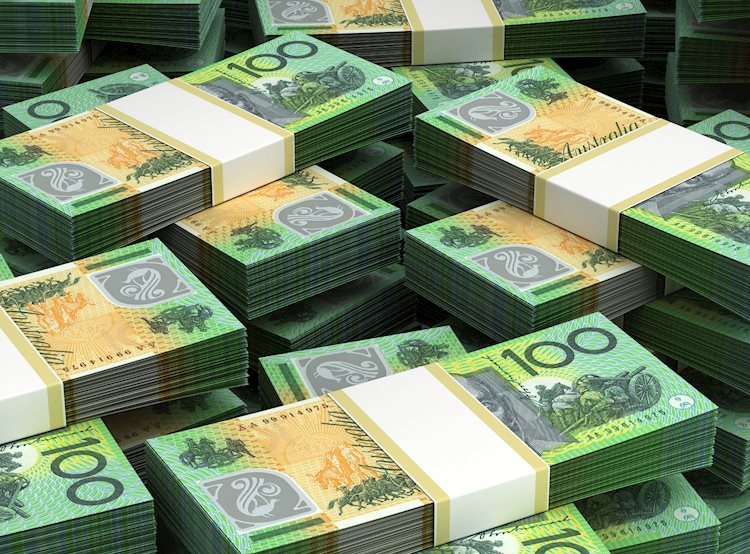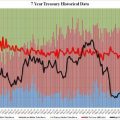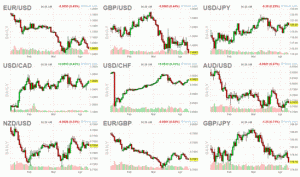- Australian Dollar holds ground above 0.6350 after soft Retail Sales data.
- Australia’s Retail Sales grew 0.2% in August, lower than the expected 0.3%
- US Dollar continues to strengthen on higher US Treasury yields, coupled with upbeat economic data.
The Australian Dollar (AUD) hit a 10-month low on Wednesday. However, the AUD/USD pair holds ground after the release of disappointing Australia’s Retail Sales data.
Australia’s monthly Consumer Price Index (CPI) has rebounded from July’s reading, which could be attributed to the increasing energy prices. This expected increase in inflation has raised anticipations of another interest rate hike by the Reserve Bank of Australia (RBA). However, the AUD failed to gain traction despite positive Consumer Price Index (CPI) figures.
The Aussie Dollar is under downward pressure due to increased risk aversion sentiment in the market. The drop in commodity prices is also acting as a limiting factor on the upside potential of the AUD/USD pair.
The US Dollar Index (DXY) continues to strengthen, propelled by robust macroeconomic data from the United States (US), trading at its highest levels since December. This surge in the US Dollar (USD) is attributed to the positive performance of US Treasury yields over an impending US government shutdown. The yield on the 10-year US Treasury note has reached record highs.
The bullish momentum in the USD is further reinforced by the hawkish remarks made by Federal Reserve (Fed) board members. Neel Kashkari, the President of the Minneapolis Federal Reserve, recently made comments that suggest the potential for additional rate hikes in the future.
Kashkari also left open the possibility of interest rates remaining at their current levels if rate cuts are delayed even further.
Daily Digest Market Movers: Australian Dollar weakens on market caution, higher US Treasury yields, hot macros
- AUD/USD attempts to rebound after hitting a 10-month low at 0.6331 on Wednesday, trading around 0.6360 at the time of writing during early Asian trading hours on Thursday.
- Australian Retail Sales increased 0.2% in August, slowing from the 0.5% rise seen in July. The index was expected to increase by 0.3% in August.
- Australia’s Monthly Consumer Price Index (CPI) year-over-year for August rose 5.2% as expected, up from the previous 4.9% increase.
- There is a growing expectation for rate increases in the subsequent November and December meetings by the RBA.
- US Dollar’s (USD) strength is attributed to the positive performance of US Treasury yields over an impending US government shutdown. The yield on the 10-year US Treasury note has reached record highs.
- US Durable Goods Orders rose 0.2%, swinging from the previous decline of 5.6% and market expectation of a 0.5% decline in August.
- EIA Crude Oil Stocks Change data on the week ending September 22 showed that stocks decreased by 2.17 million barrels compared with the 2.135 million drawdown seen a week earlier. Markets expected Oil stockpiles to decline by a much lesser 0.32 million barrels.
- The situation in China regarding Evergrande continues to worsen, with increasing turmoil, intrigue, and uncertainty. Bloomberg reported on Wednesday that the chairman of the company had been placed under police surveillance.
- Evergrande, the world’s most indebted developer with over $300 billion in total liabilities, is at the heart of an unprecedented liquidity crisis in China’s property sector.
- The hawkish remarks from Neel Kashkari, the President of the Minneapolis Federal Reserve have led to a broad-based strengthening of the US Dollar (USD) and have acted as a headwind for the AUD/USD pair. Kashkari emphasized the potential for additional rate hikes in the future.
- Traders await the US data such as the Core Personal Consumption Expenditure (PCE) Price Index, the Fed’s preferred measure of consumer inflation, which is due on Friday. The annual rate is expected to reduce from 4.2% to 3.9%.
Technical Analysis: Australian Dollar hovers above 0.6350, barrier at 0.6400 psychological level
Australian Dollar trades higher around 0.6380 level during the Asian session on Thursday. AUD/USD pair could find a barrier around 0.6400 psychological level, followed by the 21-day Exponential Moving Average (EMA) at 0.6422. A firm break above the latter could support the Aussie Dollar (AUD) to explore the region around 23.6% Fibonacci retracement at 0.6464. On the downside, the monthly low at 0.6357 aligned with the 0.6350 psychological level could be the key support, following the 0.6300 psychological level.
AUD/USD: Daily Chart
Central banks FAQs
Central Banks have a key mandate which is making sure that there is price stability in a country or region. Economies are constantly facing inflation or deflation when prices for certain goods and services are fluctuating. Constant rising prices for the same goods mean inflation, and constant lowered prices for the same goods mean deflation. It is the task of the central bank to keep the demand in line by tweaking its policy rate. For the biggest central banks like the US Federal Reserve (Fed), the European Central Bank (ECB), or the Bank of England (BoE), the mandate is to keep inflation close to 2%.
A central bank has one important tool at its disposal to get inflation higher or lower, and that is by tweaking its benchmark policy rate, commonly known as interest rate. On pre-communicated moments, the central bank will issue a statement with its policy rate and provide additional reasoning on why it is either remaining or changing (cutting or hiking) it. Local banks will adjust their savings and lending rates accordingly, which in turn will make it either harder or easier for people to earn on their savings or for companies to take out loans and make investments in their businesses. When the central bank hikes interest rates substantially, this is called monetary tightening. When it is cutting its benchmark rate, it is called monetary easing.
A central bank is often politically independent. Members of the central bank policy board are passing through a series of panels and hearings before being appointed to a policy board seat. Each member in that board often has a certain conviction on how the central bank should control inflation and the subsequent monetary policy. Members that want a very loose monetary policy, with low rates and cheap lending, to boost the economy substantially while being content to see inflation slightly above 2%, are called ‘doves’. Members that rather want to see higher rates to reward savings and want to keep a lit on inflation at all time are called ‘hawks’ and will not rest until inflation is at or just below 2%.
Normally, there is a chairman or president who leads each meeting, needs to create a consensus between the hawks or doves and has his or her final say when it would come down to a vote split to avoid a 50-50 tie on whether the current policy should be adjusted. The chairman will deliver speeches which often can be followed live, where the current monetary stance and outlook is being communicated. A central bank will try to push forward its monetary policy without triggering violent swings in rates, equities, or its currency. All members of the central bank will channel their stance toward the markets in advance of a policy meeting event. A few days before a policy meeting takes place until the new policy has been communicated, members are forbidden to talk publicly. This is called the blackout period.



